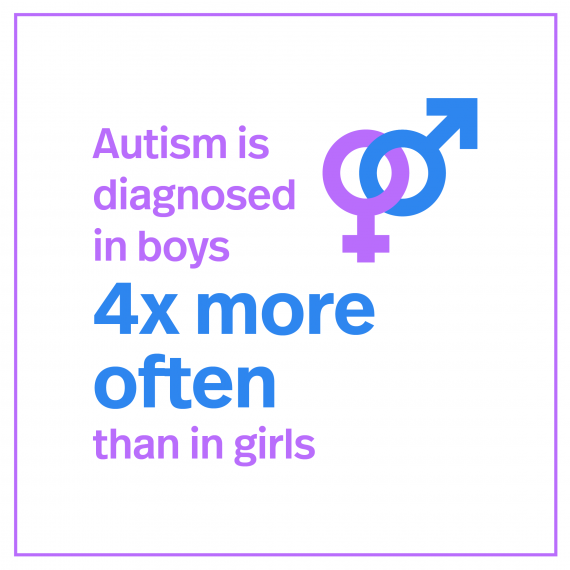Autism in girls and women
For decades, autism has been reported to be 4 times higher in boys than in girls. A growing body of research shows that diagnostic bias may be one reason why women and girls are more likely to be misdiagnosed, underdiagnosed, or diagnosed later in life. Simply, autism can look different in boys than girls. To overcome this bias, some experts suggest a different set of cutoff scores on the diagnostic tests for autism for each gender. In the meantime, since diagnosis affects treatment, recognizing the signs and symptoms of autism in girls and women is critically important.
Differences in social communication
Autistic girls appear to have differences in social development as compared to boys. Often, they learn to navigate early social interactions and maintain friendships, while compensating for other social communication challenges like using or interpreting nonverbal communication, language differences and differences in thinking or processing information – signs that can be hard to spot.
Some research suggests that other girls may be more supportive of peers with social communication differences, and other studies suggest that the mother-daughter relationship may also be useful for teaching social communication behavior and buffering social difficulties for some people.
Differences in behavior
A complex interaction between traditional ideas of autistic behaviors and socially gendered behavior norms can complicate how society interprets behavior in autistic girls. For example, an intense interest in a socially acceptable topic for girls – such as a favorite princess character for young girls or a particular celebrity in teens – can be overlooked as a developmental phase rather than a sign of rigid thinking that could support an autism diagnosis.
Diagnostic tools
Historically, autism research participants have been overwhelmingly white males. That includes studies that validated the most common diagnostic tools available to experts today. Researchers are currently studying whether there are differences in how those tools measure autistic characteristics in girls, and what factors may lead to underdiagnosis. Some theories include overlooking restricted interests that appear to be gender normative and socially acceptable, early social learning differences in girls that lead to masking autistic characteristics, and misdiagnosis of certain rigid or inflexible thinking as another condition more prevalent in women, such as depression or disordered eating.


